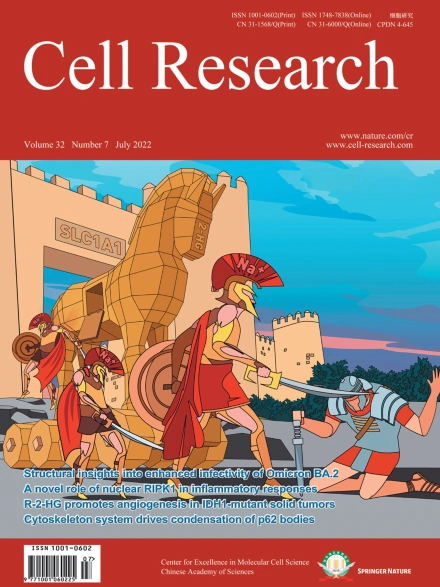
Advanced Search
Submit Manuscript
Advanced Search
Submit Manuscript
Volume 32, No 7, Jul 2022
ISSN: 1001-0602
EISSN: 1748-7838 2018
impact factor 17.848*
(Clarivate Analytics, 2019)
Volume 32 Issue 7, July 2022: 691-694 |
Selection and structural bases of potent broadly neutralizing antibodies from 3-dose vaccinees that are highly effective against diverse SARS-CoV-2 variants, including Omicron sublineages
Lei Wang1,2,† , Wangjun Fu1,2,† , Linlin Bao3,† , Zijing Jia1,2,† , Yuxia Zhang4,† , Yunjiao Zhou5,† , Wei Wu5 , Jianbo Wu5 , Qianqian Zhang5 , Yidan Gao5 , Kang Wang1,2 , Qiao Wang5,* , Chuan Qin3,* , Xiangxi Wang1,2,4,*
1CAS Key Laboratory of Infection and Immunity, National Laboratory of Macromolecules, Institute of Biophysics, Chinese Academy of Sciences, Beijing, ChinaDear Editor,
The severe acute respiratory syndrome coronavirus 2 (SARS-CoV-2), belonging to the lineage B of the genus Betacoronavirus in the Coronaviridae family, is the causative agent of the COVID19 pandemic,1 which has lasted for over two years, resulting in unprecedented public health and socioeconomic crisis. Several SARS-CoV-2 variants of interest (VOIs) as well as variants of concern (VOCs), including the Alpha (B.1.1.7), Beta (B.1.351), Gamma (P.1), Delta (B.1.617.2) and the most recently identified Omicron sublineages (BA.1, BA.1.1, BA.2 and BA.3), have emerged at different time points over the course of the pandemic, leading to the resurgence of outbreaks across the world. Among these variants, Omicron, with a dramatically increased infectivity and enhanced transmissibility, is rapidly replacing the Delta variant and is poised to become a predominately prevalent strain in more than 110 countries since it was first reported in South Africa at the end of 2021.2 As a newly characterized VOC, Omicron was classified as the fifth VOC by the World Health Organization (WHO), with over 50 amino acid mutations, 37 of which are located in the spike (S) protein. The constellation of mutations allowed Omicron to evade immune responses induced by vaccination or natural infections and confer resistance to most of the commercially developed neutralizing antibodies (NAbs),3,4,5,6 making this variant more dangerous than its predecessors. In previous studies, we isolated approximately 400 monoclonal antibodies from participants who had received 3 doses of inactivated vaccine (Coronavac).3,7 One subset of these exhibited broad and potent neutralization activities against SARS-CoV-2 variants.3 The top 3 most potent NAbs (XGv051, XGv264, and XGv286) against Omicron sublineages were selected for immunogenic and structural analysis, which is instructive for structure-based broad-spectrum vaccine design.
https://doi.org/10.1038/s41422-022-00677-z